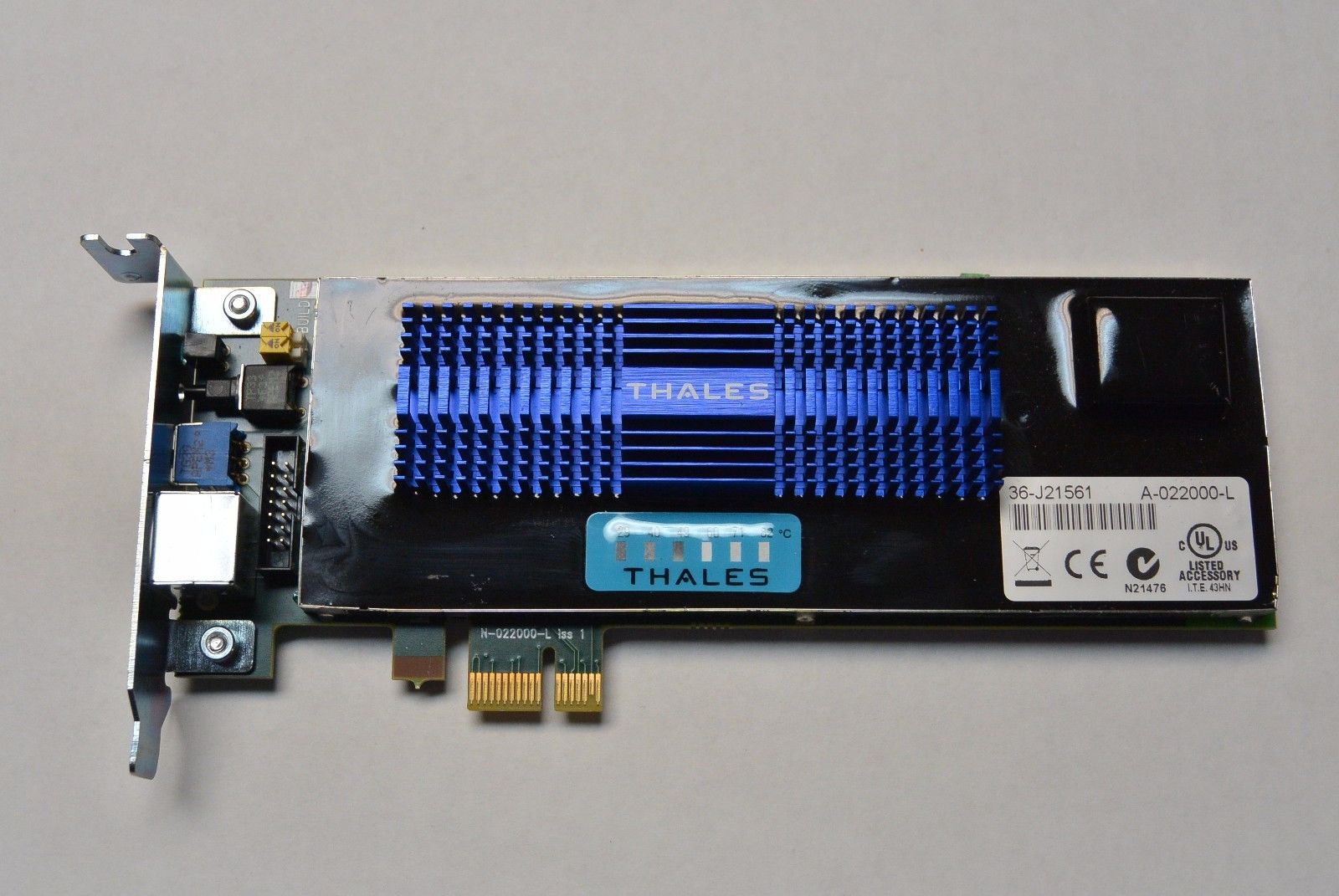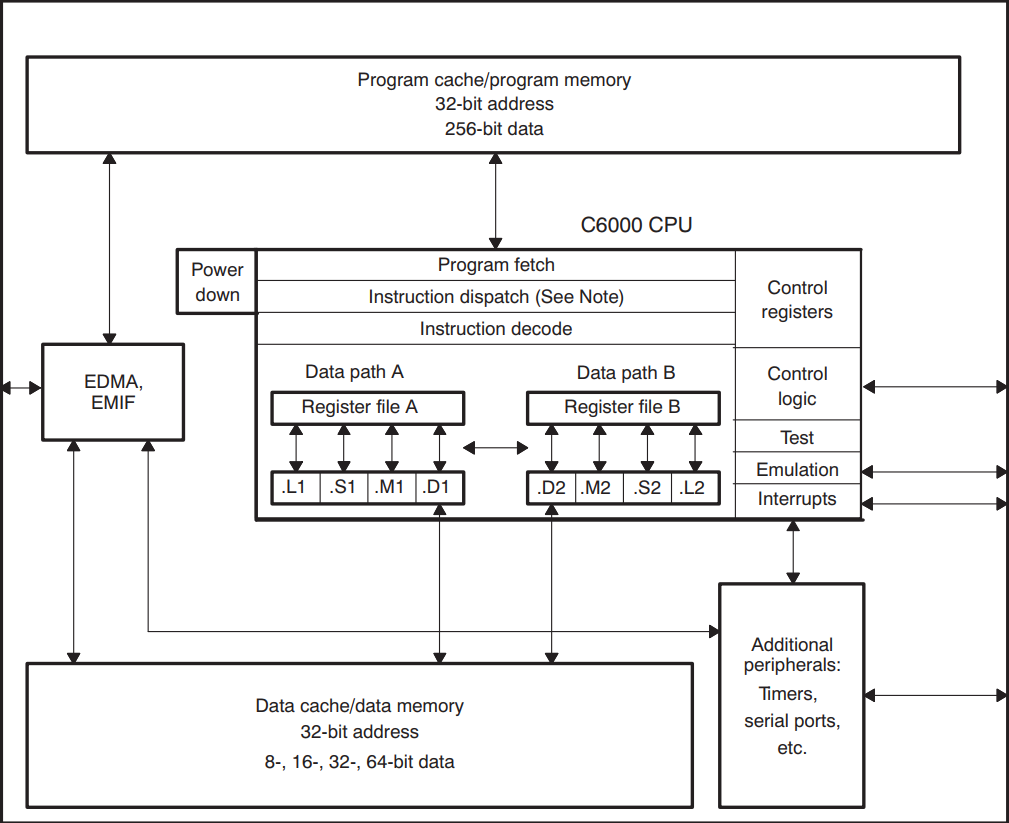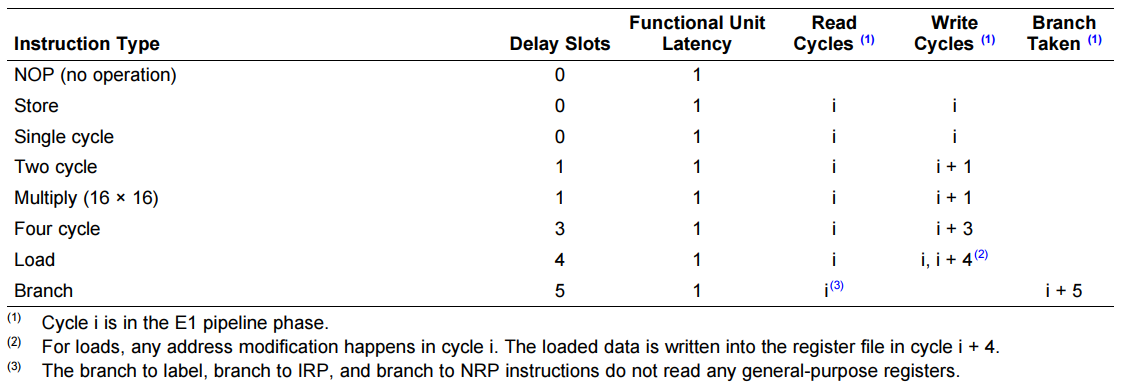Hackable Security Modules:
Reversing and exploiting a FIPS 140-2 lvl 3 HSM firmware
Fotis Loukos
<fotisl@ssl.com>
SSL Corp
Recon Brussels 2016
Who am I?
Fotis Loukos
- Go by the nick fotisl
- Work at SSL.com, a globally trusted Certification Authority focusing on TLS/SSL and Code Signing
- Hold a PhD in Computer Science from the Aristotle University of Thessaloniki
- My work focuses on Public Key Infrastructures, Certification Authorities security, vulnerability research and reverse engineering
Outline
- What is an HSM and HSM security requirements
- The Utimaco HSM and its Firmware
- The TMS320C64x DSP
- Adding a new architecture to Capstone
- Searching for vulnerabilities
What is an HSM?
Usage
- Securely store cryptographic keys
- Manage (generate etc) cryptographic keys
- Perform cryptographic operations (encrypt, decrypt, sign, verify, wrap, unwrap, etc)
Physical form
Network device

PCI card

Big players
-
Gemalto
- Bought Safenet, another big player
- Famous for the Luna series of products
- Sample value for the Safenet Network HSM 7000 Model: $29,500.00
Big players
-
Thales
- Bought nCipher, the second big player
- Famous for the nShield series of products
- Sample value for the USB nShield Edge HSM with ECC activation: $9,500.00
Big players
-
Utimaco
- Primary target
- Famous for the Cryptoserver series of products
- Part of the EJBCA ready-to-deploy PKI solution by PrimeKey
- Sample value for the SecurityServer Se52 LAN V4: 15,000.00€
A business with a lot of money

Where are they used?
PKI
All Certification Authorities (CAs) are required to use HSMs. From the CA/B Forum Baseline requirements:
The CA SHALL protect its Private Key in a system or device that has been validated as meeting at least FIPS 140 level 3 or an appropriate Common Criteria Protection Profile or Security Target, EAL 4 (or higher), which includes requirements to protect the Private Key and other assets against known threats.
DNSSEC
Root Zone operators store keys inside HSMs. From the DNSSEC Practice Statement for the Root Zone KSK Operator:
For RZ KSK generation and RZ KSK private component operations and storage, ICANN uses hardware security modules that are validated at FIPS 140-2 level 4 overall.
Electronic transactions
PCI DSS in some cases requires HSMs to secure cardholder data throughout the transaction process.
The PCI HSM Security Requirements document describes the minimum security requirements for compliant HSMs.
One does not simply
Implement serious crypto

without an HSM
Security Requirements
General information
- As HSMs are used in critical applications and infrastructures, different standards have been proposed to evaluate their security.
-
Major standards:
- FIPS 140-2
- Common Criteria
FIPS 140-2
- Federal Information Processing Standards Publication 140-2
- ...or otherwise, the US stuff
- Issued at 2001 by the National Institute of Standards and Technology, updated at 2002
- Most widely used standard
- Supersedes FIPS 140-1
- Will be superseded by FIPS 140-3... when it gets released!
FIPS 140-2
Defines 4 different security levels:
- Level 1: Lowest security level. At least one approved algorithm must be implemented and there are no physical security controls.
- Level 2: Level 1 plus physical security controls. Cryptographic keys and Critical Security Parameters (CSPs) are protected with tamper-evident coatings or seals
FIPS 140-2
Defines 4 different security levels:
- Level 3: Level 2 with harder physical security controls. Keys and CSPs are deleted if potential breach is detected.
- Level 4: Level 3 with more strict physical security controls to make the HSM usable in physically unprotected environments.
FIPS 140-2
FIPS 140-2 validation happens at the Cryptographic Module Testing Laboratories which are accredited by the National Voluntary Laboratory Accreditation Program as part of the Cryptographic Module Validation Program.
Currently 22 laboratories have been accredited to perform FIPS 140-2 validation.
Common Criteria
- ISO Standard
- The EU stuff
- Has Evaluation Assurance Levels (EALs) similar to FIPS 140-2 levels
- In addition there are Protection Profiles (PP), Security Targets (ST), etc
Common Criteria
Interesting fact:
- In the PKI world the standard is EAL4+
- EAL4 is Methodically Designed, Tested and Reviewed
- Best security practices should be used during design and test... Lets see how it goes!
The Utimaco HSM
Various models of the CryptoServer
- SecurityServer Se Gen2
- SecurityServer CSe
- SecurityServer Se (End of line)
- TimestampServer
Specifications
- FIPS 140-2 Level 3 certification (some have higher levels in specific areas, such as physical security)
- Available as both PCIe cards and Network Attached Appliances
- Support for RSA, DSA, ECDSA (NIST and Brainpool curves), DH, ECDH, AES, DES, 3DES, SHA1, SHA2, SHA3, RIPEMD, etc
- Depending on your license you get more transactions per second
The hardware
- Network HSMs are Linux boxes with a PCIe HSM.
- There is a physical protection layer and a battery that helps erase the contents of the memory in case of breach when the HSM is powered off
- Sensors can detect changes in temperature, voltage, power supply in general and tampering of the protecting foil
The hardware
Every PCIe HSM contains:
- A Texas Instruments TMS320C64x DSP that performs all cryptographic operations
- A hardware True Random Number Generator (TRNG) and a Deterministic Random Bit Generator (DRBG)
- A Key-RAM which contains the Device Key and in case of attack gets deleted
Device Key
- A single key created when the HSM is brought into operation
- Cannot be extracted, exported, imported, or in any way manipulated
- Encrypts all other cryptographic keys and critical security parameters
Master Backup Keys
- 256 bit AES or 128 bit (?) 3DES Key
- Used to encrypt backups of cryptographic keys
- Can be split into many shares using an n out of m scheme (XOR for 2 out of 2, Shamir's Secret Sharing otherwise)
- Keys inside the HSM are not encrypted using the MBK but using the Device Key
Tools
- csadm: Command line tool to manage both PCIe and Network HSMs
- p11tool2: Command line tool to use the PKCS#11 API
- cxitool: Command line tool to use the CXI API
- cat / p11cat: Java versions of the above
Simulator
- A simulator exists which runs its own firmware too
- As we'll see later on, this will be very useful!
Users
Every user has:
- An authentication method: RSA signature (in soft form or in smartcards), ECDSA signature (in soft form), HMAC password
- Permissions: The value 0, 1 or 2 at 8 different permission groups
- Flags, attributes, etc
Permissions
- To complete a task you need all logged in users to add up to a certain permission level at a certain group.
- For example, to add a user you need all logged in users' permissions to add up to 2 at group 7 (no more, no less).
Communication protocol
- Custom communication protocol with the PCIe HSM
- Network HSMs listen at both a TCP and a UDP port and send everything received to the internal PCIe card
- No public specification available
- AES256 encrypted communication with unique session keys and MAC
The Utimaco Firmware
Format
- A single blob in a custom .mpkg format
- Both FIPS and non-FIPS versions
- After reversing much of the format I found out that csadm has an option to unpack mpkg files
- Lesson learned: RTFM!
- After unpacking you get a number of .mtc files
Sample Firmware
SecurityServer-Se-Series-4.01.0.5.mpkg →
adm_3.0.18.1_c50.mtc aes_1.3.7.0_c50.mtc asn1_1.0.3.4_c50.mtc bcm_1.0.2.0_c50.mtc cmds_3.5.1.6_c50.mtc cxi_2.1.11.3_c50.mtc db_1.3.1.1_c50.mtc dsa_1.2.2.1_c50.mtc eca_1.1.7.6_c50.mtc ecdsa_1.1.8.7_c50.mtc hash_1.0.10.1_c50.mtc
hce_2.2.2.1_c50.mtc lna_1.2.3.4_c50.mtc mbk_2.2.4.4_c50.mtc ntp_1.2.0.7_c50.mtc pp_1.2.5.1_c50.mtc sc_1.2.0.3_c50.mtc smos_3.3.4.2_c86.mtc util_3.0.3.0_c50.mtc vdes_1.0.9.1_c50.mtc vrsa_1.3.0.6_c50.mtc
MTC Files
- Individual firmware modules
-
Each one of them seems to be associated with a specific function:
- adm_3.0.18.1_c50.mtc → Administration functions
- aes_1.3.7.0_c50.mtc → AES implementation
- asn1_1.0.3.4_c50.mtc → ASN.1 encoding/decoding (this is the X.509 world!)
MTC Files

Let's use binwalk!
MTC Files
$ binwalk adm_3.0.18.1_c50.mtc
DECIMAL HEXADECIMAL DESCRIPTION
--------------------------------------------------------------------------------
53925 0xD2A5 Copyright string: "Copyright (c) 1996-2014 Texas Instruments Incorporated"
54123 0xD36B Copyright string: "Copyright (c) 1996-2014 Texas Instruments Incorporated"
55658 0xD96A Unix path: /tmp/TI_MKLIBqpFZmO/OBJ/memset.asm:$C$L2:1:1398463752
55816 0xDA08 Copyright string: "Copyright (c) 1996-2014 Texas Instruments Incorporated"
55985 0xDAB1 Copyright string: "Copyright (c) 1996-2014 Texas Instruments Incorporated"
Four copyright strings inside and one unix path → WTF guys, use a standard format!
MTC Files

Hexdump to the rescue!
MTC Files
$ hexdump -C adm_3.0.18.1_c50.mtc
00000000 4d 54 43 48 00 01 2d e0 01 00 00 00 01 02 01 00 |MTCH..-.........|
00000010 00 00 00 18 00 00 00 00 4d 4d 43 48 00 01 2d c8 |........MMCH..-.|
00000020 01 01 00 00 a3 07 55 2e d3 44 d5 ba 41 44 4d 00 |......U..D..ADM.|
00000030 00 00 00 00 00 00 00 00 00 00 00 87 03 00 12 01 |................|
00000040 41 64 6d 69 6e 69 73 74 72 61 74 69 6f 6e 20 4d |Administration M|
00000050 6f 64 75 6c 65 00 00 00 00 00 00 00 00 00 00 00 |odule...........|
....
00000110 00 00 2e 74 65 78 74 00 00 00 80 0f 00 00 80 0f |...text.........|
00000120 00 00 e0 bf 00 00 8e 11 00 00 5e e2 00 00 00 00 |..........^.....|
00000130 00 00 b6 03 00 00 00 00 00 00 20 05 00 00 00 00 |.......... .....|
00000140 00 00 2e 64 61 74 61 00 00 00 60 cf 00 00 60 cf |...data...`...`.|
00000150 00 00 00 00 00 00 00 00 00 00 00 00 00 00 00 00 |................|
00000160 00 00 00 00 00 00 00 00 00 00 80 00 00 00 00 00 |................|
- A header at the begining with a description!
- ".text" and ".data" seem to be names of sections
- Maybe some modified standard format???
MTC Files
Challenge accepted!

Let's reverse the administration tool that extracted the files!
MTC Files
Fast forward many hours...
$ strings csadm | grep COFF
CS2-COFF
COFF section
MTC Files
- COFF files!
- But why didn't binwalk recognize this?
- The answer is simple: someone thought it would be nice to change the standard COFF format to add their own fields over there!
MTC Files

Now what???
MTC Files
- We first identify the length of the section header by calculating differences between names
- We then fit the records we found to the standard section header
- Next step is finding out how much the COFF file header was messed up (you thought they would mess with this one?)
- And we fit this header to the standard COFF file header
MTC Files

We can now extract the COFF file!
Now what?
MTC Files

MTC Files

MTC Files

MTC Files
(Insert multiple slides with Picard facepalms and radare2, binutils, etc)
(Ok, actually TI has a disassembler but it's unusable)
MTC Files
Challenge accepted!

Let's write our own disassembler!
The TMS320C64x DSP
Steps to write our own disassembler:
- Study the architecture of the DSP
- Study the memory organization
- Study the ABI
- Find potential frameworks we can use
- Write the actual disassembler
The architecture
- An 'exotic' architecture compared to x86, x86_64, ARM, MIPS, etc
- 16 bit Very Long Instruction Word (VLIW) DSP
- 2x4 Functional Units (.L1, .S1, .M1, .D1, .L2, .S2, .M2, .D2), each one with it's own assembly instructions
- Ability to execute multiple instructions in parallel at different Functional Units
- 2 Register Files (A and B)
- Crosspath to transfer data between A and B
Block diagram

Data paths
Each data path contains:
- 1 ALU (the .L functional unit)
- 1 Shifter (the .S functional unit)
- 1 Multiplier (the .M functional unit)
- 1 Adder/Subtractor, also used for address generation (the .D functional unit)
- 1 Register File with 32 32-bit registers
There is also one cross path for transfers between data path A and B
Parallel execution
- 8 execution units can execute up to 8 commands in parallel
- At any single time only one command can use the cross path
- Instructions are fetched in fetch packets (FP) of 8 words
- You cannot execute instructions in two different FPs in parallel
Registers
- General purpose registers A0-A31 and B0-B31
- Instructions operate on 8, 16, 32 or 40 bit data
- For 40 bit operations one register from the even register file is used, together with the relevant register from the odd register file, e.g. A11:A10 or B25:B24
- There are instructions that operate on packed data (e.g. 4 8-bit quantities at a single register)
- 64 bit loads and stores can be performed in a single operation
Registers
- A0-A2,B0-B2 are also conditional registers
- All instructions can take a conditional prefix, those instructions will be executed only if the corresponding register is zero or non-zero
-
Control Register File: Control registers such as:
- PCE1: Program Counter, E1 phase
- ICR: Interrupt Clear Register
- CSR: Control Status Register
Instruction Format
Sample instructions:
SHR .S1 A1, 10, A2
MV .S1X B0, A0
AND .D1 A0, A1, A2
|| AND .D2 B0, B1, B2
[ A0] ADD .L1 A1, A2, A3
|| [!A0] ADD .L2 B1, B2, B3
Delay Slots
- Most instructions are executed at a single cycle
- ...but not all of them!
- Some multi-cycle instructions read the source operands at one cycle and write the result at a different one
- Branches read the jump target at cycle i and jump to it at cycle i+5
- In the mean time, if the jump target was a register, its value may have changed
Delay Slots

Reversing Tools

Still wondering why no tools are available???
Memory organization
- 32 bit, byte addressable address space
-
On-chip memory:
- Organized in data and program spaces
- Two 64 bit internal ports to access data memory
- One 256 bit internal port to access program memory
-
Off-chip memory:
- Data and program spaces are unified via the External Memory InterFace (EMIF)
- EMIF is 32 bit
ABI - Calling Conventions
- No stack exists (stack as in x86 stack)
- To call a function you need to calculate the return address by adding PC to the relative offset of the return address using a special assembly instruction (ADDKPC)
- To return you need to jump to the register where the previous value has been saved
- ABI specifies this register should be B3
- The displacement at a branch instruction is a 21 bit word offset. If the destination is unreachable, the linker must generate a trampoline
ABI - Calling Conventions
B .S1 func
AND .D1 A0, A1, A2
|| AND .D2 B0, B1, B2
ADDKPC .S2 returnhere, B3
ADD .D1 A2, 1, A3
MV .D2 B3, B0
|| MV .D1 A3, A0
OR .S2X B0, A0, B4
returnhere:
MVK .S1 10, A0
...
func:
...
B .S1 B3
ABI - Registers
- 12 callee-saved registers (A10-A15, B10-B15)
- A15 acts as Frame Pointer
- B14 acts as Data Page Pointer
- B15 acts as Stack Pointer
- B3 keeps the return address
ABI - Argument passing
- First 10 arguments are passed in registers
- If an argument is 64 bits, a register pair is used
- That makes us a total of 20 registers for argument passing
- 32 bit values are returned in A4, 64 bit values in A5:A4, and bigger values are returned by reference
Implementing the disassembler

We know the architecture, the memory layout and the ABI. Now what???
Framework choices
- Binutils: too much work
- LLVM: still too much work
- Radare2: Potential choice
- Capstone: Potential choice, much more attractive for implementing new architectures
The Capstone disassembly framework

The Capstone disassembly framework
- Written in pure C
- Open source
- Based on LLVM
- Bindings for many other programming languages
- No documentation exists on adding a new architecture, but it should be fairly easy
Where do we start?
- Clone the project
- See how other architectures are implemented
- Try to implement our own
Architecture implementation
A TableGen (.td) file with the architecture and instructions description helps generate:
- Register/Instruction/Subtarget Info Files
- Disassembler Tables
- Assembly Writer
But there's more needed!
The TableGen file
Let's first generate this and we'll see about the rest...

The TableGen file format
A file defining:
- Targets/Subtargets
- Processors
- Instruction Set
- Registers
- Calling Conventions
What's actually needed?
In our case we don't need:
- Calling conventions - LLVM needs them for the compilation part but we'll just create a disassembler
- The instruction selection pattern - LLVM needs it to select the appropriate instruction when compiling
- Many flags
What's actually needed?
What we will need is:
- Register description
-
Instruction description with:
- Hardware encoding
- Input/output registers
- Assembly string
How do we define registers?
Simple, we define a register class and then instances for all registers!
class TMS320C64xReg<string n, bits<5> num, bit file,
bits<3> condition = 7> : Register<n> {
let HWEncoding{15-5} = 0;
let HWEncoding{4-0} = num;
field bit File = file;
field bits<3> Condition = condition;
let Namespace = "TMS320C64x";
}
def A0 : TMS320C64xReg<"A0", 0, 0, 6>, DwarfRegNum<[0]>;
...
def B31 : TMS320C64xReg<"B31", 31, 1>, DwarfRegNum<[63]>;
How do we define instructions?
- More difficult
- We have to define operands
- Then instruction classes
- And if needed multiclasses
How do we define operands?
def memop : Operand<i32>, PatLeaf<(imm),
[{ return isInt<15>(N->getZExtValue()); }]>
{
let DecoderMethod = "DecodeMemOperand";
let EncoderMethod = "EncodeMemOperand";
let PrintMethod = "printMemOperand";
}
For every operand we need to create a decoder, an encoder and maybe a print method!
How do we define instruction classes?
// Superclass
class TMS320C64xInst<dag outops, dag inops, string asmstr,
list<dag> pattern> : Instruction {
field bits<32> Inst;
field bits<32> SoftFail = 0;
bits<3> cond;
bit condzero;
bit side;
bit parallel;
let OutOperandList = outops;
let InOperandList = !con(inops, (ins condreg:$cond,
condregzero:$condzero, sideop:$side,
parallelop:$parallel));
let AsmString = asmstr;
let Pattern = pattern;
How do we define instruction classes?
let Inst{31-29} = cond;
let Inst{28} = condzero;
let Inst{1} = side;
let Inst{0} = parallel;
let Size = 4;
let isPredicable = 1;
let hasSideEffects = 0;
let Namespace = "TMS320C64x";
}
How do we define instruction classes?
class TMS320C64xInstD1<bits<6> opVal, dag outops, dag inops,
string asmstr, list<dag> pattern> :
TMS320C64xInst<outops, inops, asmstr, pattern> {
bits<5> dst;
bits<5> src2;
bits<5> src1;
bits<6> op = opVal;
let Inst{27-23} = dst;
let Inst{22-18} = src2;
let Inst{17-13} = src1;
let Inst{12-7} = op;
let Inst{6-2} = 0b10000;
}
How do we define instruction classes?
class TMS320C64xInstD2<bits<4> opVal, dag outops, dag inops,
string asmstr, list<dag> pattern> :
TMS320C64xInst<outops, !con(inops,
(ins crosspathopx2:$crosspath)), asmstr, pattern> {
bits<5> dst;
bits<5> src2;
bits<5> src1;
bit crosspath;
bits<4> op = opVal;
let Inst{27-23} = dst;
let Inst{22-18} = src2;
let Inst{17-13} = src1;
let Inst{12} = crosspath;
let Inst{9-6} = op;
let Inst{11-10} = 0b10;
let Inst{5-2} = 0b1100;
}
How do we define instruction multiclasses?
multiclass TMS320C64xInstD1_ri<bits<6> opVal1, bits<6> opVal2,
string asmstr1, string asmstr2> {
def _d1_rrr : TMS320C64xInstD1<opVal1, ( outs GPRegs:$dst ),
( ins GPRegs:$src2, GPRegs:$src1 ),
asmstr1, []>;
def _d1_rir : TMS320C64xInstD1<opVal2, ( outs GPRegs:$dst ),
( ins GPRegs:$src2, ucst5:$src1 ),
asmstr2, []>;
}
How do we define instructions?
defm ADD : TMS320C64xInstD1_ri<0b010000, 0b010010,
"ADD\t$src2, $src1, $dst", "ADD\t$src2, $src1, $dst">;
def ADD_d2_rrr : TMS320C64xInstD2<0b1010,
( outs GPRegs:$dst ),
( ins GPRegs:$src2, GPRegs:$src1 ),
"ADD\t$src1, $src2, $dst",
[]>;
Are we done?
- Not even close
- We need to implement code for encoding/decoding/printing operands (real and 'virtual' ones such as parallel and crosspath)
- We need to implement instruction mappings
- We need to add supporting code for the architecture
- We need to add at least python bindings
Lets finish this thing!

Problems faced
-
The converter was not the LLVM one but a not-disclosed version that produces C code instead of C++
- No problem, converted the original LLVM converter to produce output compatible with Capstone
-
Decoding of all fields must be done manually
- Still no problem, we have all the documentation so it can be done
Problems faced
-
Instructions that use PC relative addressing must be handled specially
- We'll just have to keep the PC and make all calculations correctly
- During coding the TMS320C64x architecture support, PC relative addressing bugs were found at other architectures
Problems faced
-
Branches must be handled with care since they are relative to the first instruction in the fetch packet
- Again, we'll have to keep the PC and based on the implementation of the instruction dispatch unit find out the first instruction in each fetch packet
-
The parallel bit is not set at the same instruction but at the previous one
- Difficult, but can be done with some post-processing
Congratulations!

We have a disassembler we can use!
Reversing the firmware
How do we proceed?
- We can disassemble everything
- But we have no symbols
- And we have thousands of lines of strange assembly code
Reversing the firmware

Let's check the simulator firmware!
The simulator firmware
- Extract the MTC files and then the internal binary
- At the actual firmware this was a modified COFF
- At the simulator firmware it's... a DLL!
Reversing the firmware

We've got symbols!
What now?
- Correlate string references in both firmwares, same strings at same functions (easy)
- Check out branches from the same functions (harder)
- Fix the rest by hand (much harder)
- Read the code and profit!
Can we profit?
- These products are methodically tested and the best security practices are used during design
- Bugs should not exist
- At least, simple and easy to identify bugs should be eliminated
- Let's move on to an example of security checks...
The following slide used to have the title 'Extraction of MBK' which is incorrect. The correct title is 'Extraction of MBK database backup'. Within the body of the slides it mentions directly the database VMBK1.db, which is the MBK database. Of course, according to the manuals this database cannot be extracted. This is the reason there is a faulty check over there.
Additionally, in no case is it implied that with this bug you can extract any private keys or CSPs.
This note was added after receiving a mail by Utimaco.
Extraction of MBK database backup
000009d8 00564d42 .word 0x00564d42 // '\x00VMB'
000009dc 4b310073 .word 0x4b310073 // 'K1\x00s'
_adm_ext_list_db_search_keys:
...
|| MVK.S1 0x09d9,A5
|| ADD.L1X A4,B4,A3
|| ADD.D2 B15,0x17,B4
MVKH.S1 0x0000,A5
SUB.L1 A5,0x1,A4
LDB.D1T1 *++A4[1],A0
LDBU.D2T2 *++B4[1],B5
MVK.L1 0,A1
NOP 2
EXTU.S1 A0,24,24,A5
|| [ A0] SUB.L1 A3,0x1,A1
[ A0] SUB.L1 A3,0x1,A3
CMPEQ.L2X B5,A5,B0
[!B0] MVK.L1 0,A1
|| [!B0] B.S2 0x003010
...
Extraction of MBK database backup
- Security controls: check if string starts with 'VMBK1', 'MBK' or 'session_obj' to protect sensitive databases
- If tests pass, then open the database with the common open function
-
What's the argument to this function?
- The name of the database, such as CXIKEY.db
- Possibly prefixed with the location, such as FLASH\CXIKEY.db
Extraction of MBK database backup
What if we extract FLASH\VMBK1.db?

Sometimes one facepalm is not enough...
What about other bugs?
- All the code has the same quality
- Similar logical errors can be found
- Haven't searched for buffer overflows yet
Disclosure
- Contacted Utimaco at 10/03/2016
- Managed to receive PGP keys and certificate at 19/5/2016
- Sent details at 20/5/2016
- Received final official answer at 17/6/2016
- Got access to an HSM with updated firmware for testing at 20/10/2016
Downloads
- Reversing tools: https://github.com/fotisl/utimaco
- Capstone: https://github.com/aquynh/capstone/tree/tms320c64x